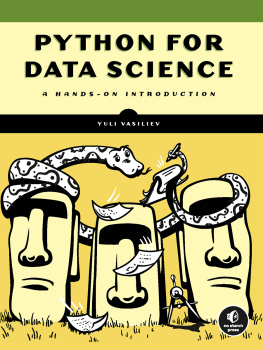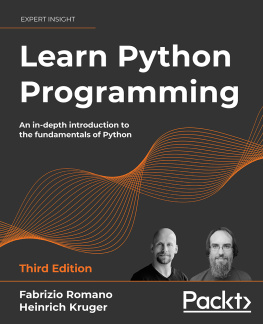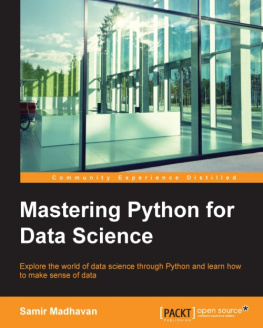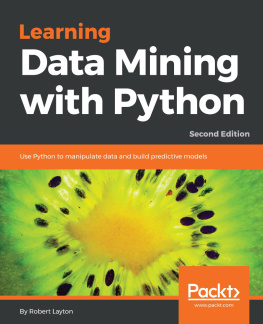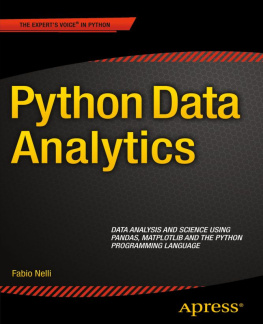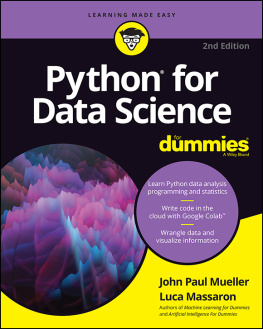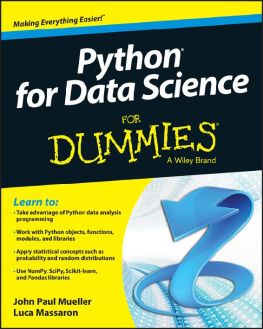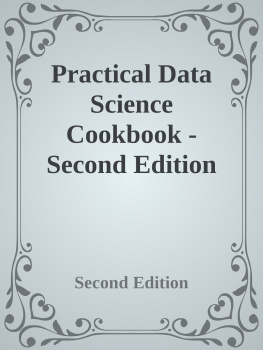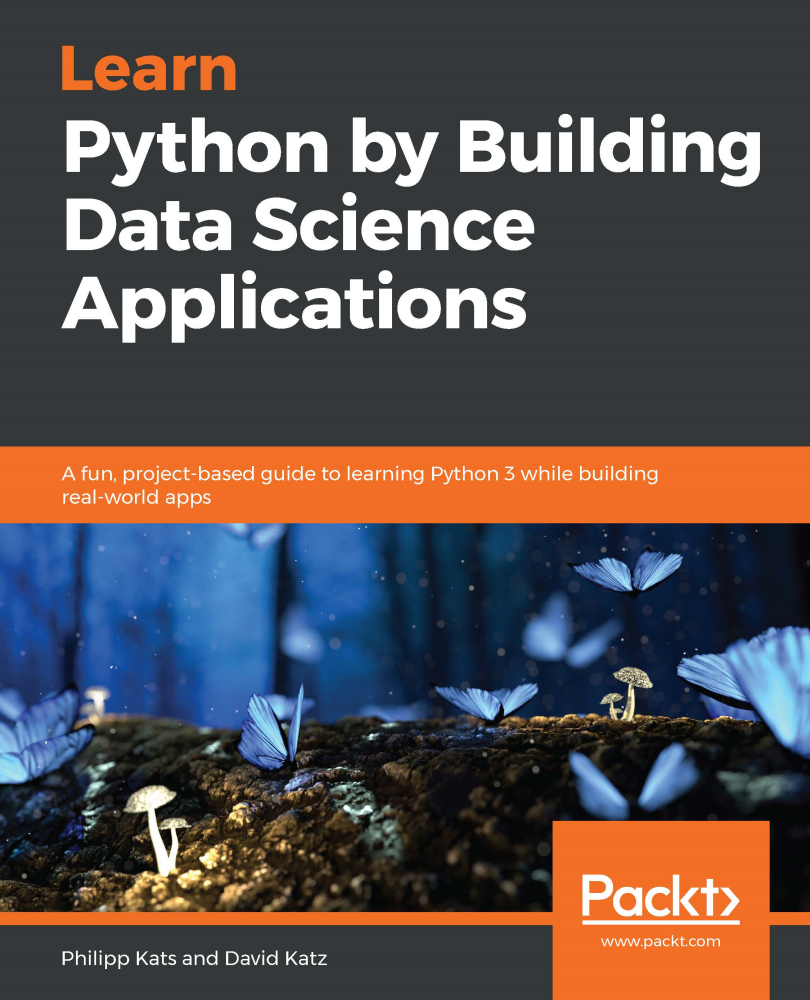Kats Philipp - Learn Python by building data science applications: a fun, project-based guide to learning Python 3 while building real-world apps
Here you can read online Kats Philipp - Learn Python by building data science applications: a fun, project-based guide to learning Python 3 while building real-world apps full text of the book (entire story) in english for free. Download pdf and epub, get meaning, cover and reviews about this ebook. City: Birmingham;Mumbai, year: 2019, publisher: Packt Publishing, genre: Home and family. Description of the work, (preface) as well as reviews are available. Best literature library LitArk.com created for fans of good reading and offers a wide selection of genres:
Romance novel
Science fiction
Adventure
Detective
Science
History
Home and family
Prose
Art
Politics
Computer
Non-fiction
Religion
Business
Children
Humor
Choose a favorite category and find really read worthwhile books. Enjoy immersion in the world of imagination, feel the emotions of the characters or learn something new for yourself, make an fascinating discovery.

- Book:Learn Python by building data science applications: a fun, project-based guide to learning Python 3 while building real-world apps
- Author:
- Publisher:Packt Publishing
- Genre:
- Year:2019
- City:Birmingham;Mumbai
- Rating:3 / 5
- Favourites:Add to favourites
- Your mark:
Learn Python by building data science applications: a fun, project-based guide to learning Python 3 while building real-world apps: summary, description and annotation
We offer to read an annotation, description, summary or preface (depends on what the author of the book "Learn Python by building data science applications: a fun, project-based guide to learning Python 3 while building real-world apps" wrote himself). If you haven't found the necessary information about the book — write in the comments, we will try to find it.
Understand the constructs of the Python programming language and use them to build data science projects
Key Features- Learn the basics of developing applications with Python and deploy your first data application
- Take your first steps in Python programming by understanding and using data structures, variables, and loops
- Delve into Jupyter, NumPy, Pandas, SciPy, and sklearn to explore the data science ecosystem in Python
Python is the most widely used programming language for building data science applications. Complete with step-by-step instructions, this book contains easy-to-follow tutorials to help you learn Python and develop real-world data science projects. The secret sauce of the book is its curated list of topics and solutions, put together using a range of real-world projects, covering initial data collection, data analysis, and production.
This Python book starts by taking you through the basics of programming, right from variables and data types to classes and functions. Youll learn how to write idiomatic code and test and debug it, and discover how you can create packages or use the range of built-in ones. Youll also be introduced to the extensive ecosystem of Python data science packages, including NumPy, Pandas, scikit-learn, Altair, and Datashader. Furthermore, youll be able to perform data analysis, train models, and interpret and communicate the results. Finally, youll get to grips with structuring and scheduling scripts using Luigi and sharing your machine learning models with the world as a microservice.
By the end of the book, youll have learned not only how to implement Python in data science projects, but also how to maintain and design them to meet high programming standards.
What you will learn- Code in Python using Jupyter and VS Code
- Explore the basics of coding - loops, variables, functions, and classes
- Deploy continuous integration with Git, Bash, and DVC
- Get to grips with Pandas, NumPy, and scikit-learn
- Perform data visualization with Matplotlib, Altair, and Datashader
- Create a package out of your code using poetry and test it with PyTest
- Make your machine learning model accessible to anyone with the web API
If you want to learn Python or data science in a fun and engaging way, this book is for you. Youll also find this book useful if youre a high school student, researcher, analyst, or anyone with little or no coding experience with an interest in the subject and courage to learn, fail, and learn from failing. A basic understanding of how computers work will be useful.
Downloading the example code for this ebook: You can download the example code files for this ebook on GitHub at the following link: https://github.com/PacktPublishing/Python-Programming-Projects-Learn-Python-3.7-by-building-applications. If you require support please email: customercare@packt.com
Kats Philipp: author's other books
Who wrote Learn Python by building data science applications: a fun, project-based guide to learning Python 3 while building real-world apps? Find out the surname, the name of the author of the book and a list of all author's works by series.

